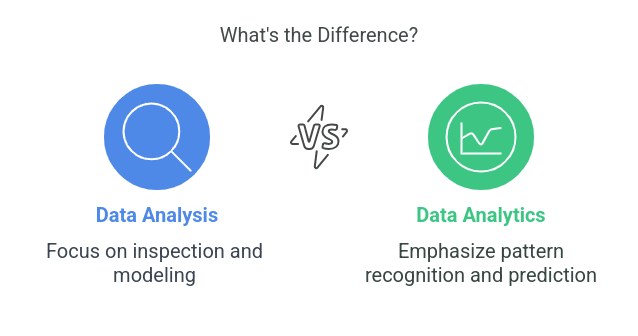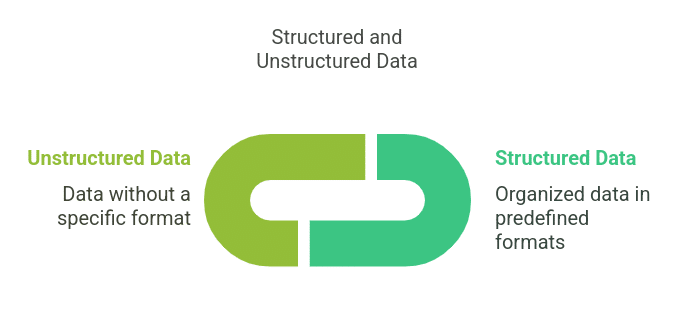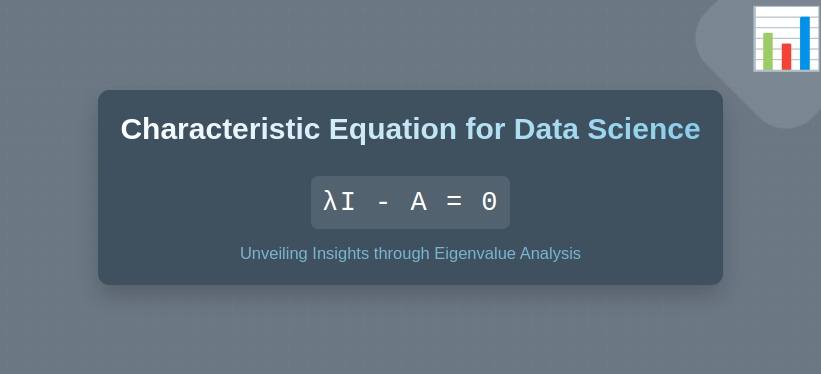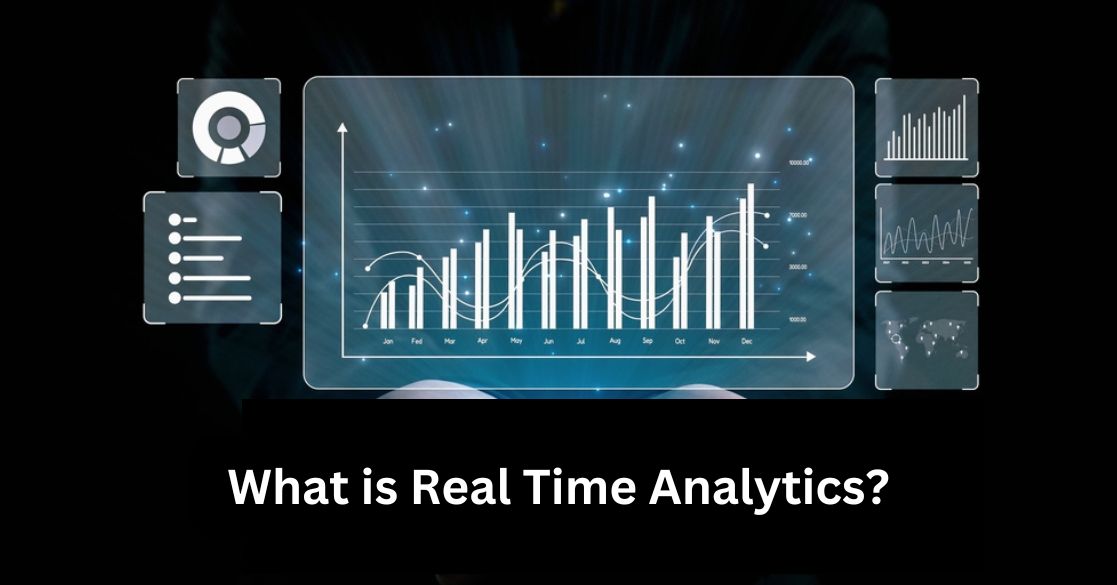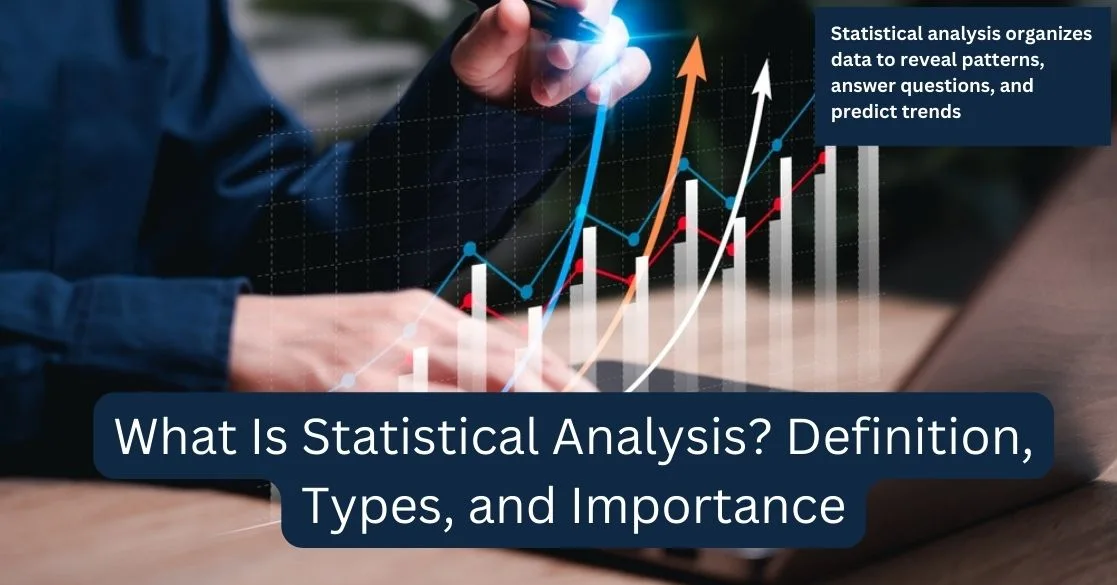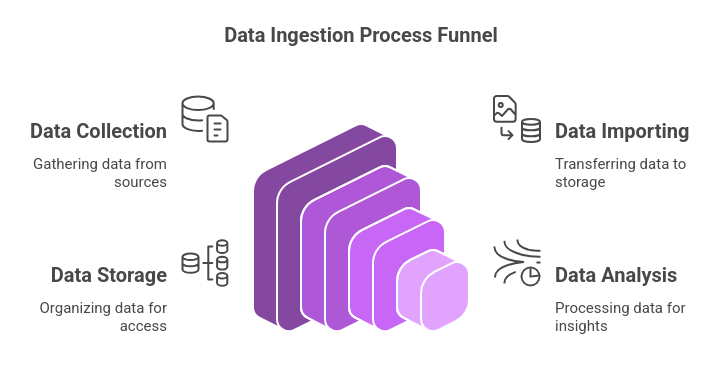Did you know that 60% of organizations are already tapping into AI and big data to enhance their daily operations?
Even more, 81% of companies now view data as central to making informed business decisions.
This shift reflects a powerful trend: data science is becoming essential for overcoming real-world challenges, from optimizing resources to making strategic decisions that drive success.
This blog will explore some of the key data science techniques used today to address and solve pressing problems across industries.
Healthcare Applications
1. Predictive Analytics for Patient Care:
Use Case: Predicting patient falls and implementing preventive measures based on historical data.
Data Science Techniques:
- Supervised Learning: Models like logistic regression, decision trees, and ensemble methods (e.g., random forests, gradient boosting) can be used to predict outcomes such as patient falls when trained on datasets.
- Feature Engineering: Using patient data such as(age, medical records, mobility metrics) to improve model performance and predict more relevant outcomes. This approach helps in effectively managing patient health by tracking vitals, monitoring improvements, and analyzing treatments.
- Cross-Validation: Making sure that the model works well by checking its performance on different parts of data. Which will lead to better treatment recommendations, earlier diagnoses, and reducing the risk of errors.
- Interpretability Tools: By use of SHAP (Shapley Additive explanations) or LIME (Local Interpretable Model-agnostic Explanations) explaining model decisions, we can build trusted AI based health care systems.
Tools and Libraries:
- Python Libraries: sci-kit-learn, TensorFlow, Keras
- Visualization: Matplotlib, Seaborn
- Model Interpretability: SHAP, LIME
Explore our curated selection of free courses to master these tools.
- Sci-kit-learn Free Course
- TensorFlow Free Course
- Keras Free Course
- Matplotlib Free Course
- Seaborn Free Course
Example: A random forest classifier is used by a healthcare company to analyze patient records to determine who is at high risk of falling. For patient safety and resource allocation optimisation, the company targets interventions for these patients. For example, it could help in better allocation of nurses in hospitals to cover all shifts, patients and so on.
2. Fraud Detection in Healthcare Services
Use Case: Identifying fraudulent billing practices in healthcare providers.
Data Science Techniques:
- Anomaly Detection: Identifying outliers in billing to get any anomaly or inconsistent data with the help of algorithms like Isolation Forest, One-Class SVM, or autoencoders.
- Unsupervised Learning: We can use Clustering algorithms (e.g., K-means, DBSCAN) to group similar transactions which will help to find deviations in data. Finding fake bills and overcharged bills to ensure transparency in billing.
- Ensemble Methods: Combining multiple models to enhance detection accuracy and reduce false positives. This will help in the early detection of disease, give personalized treatment plans, and Improve diagnosis.
- Data Preprocessing: Cleaning and normalizing transaction data to ensure consistency and reliability in analysis. Which will help in providing better treatment and results for patients in healthcare.
Tools and Libraries:
- Python Libraries: sci-kit-learn, PyOD (Python Outlier Detection)
- Big Data Tools: Apache Spark for handling large datasets
- Visualization: Tableau and Power BI for presenting fraud detection insights
Discover these tools at no cost with our range of free courses.
Example: Isolation Forest algorithms are applied by data scientists to billing data in order to uncover discrepancies that could indicate fraudulent activity. This approach helps prevent financial losses and preserve the improvements in healthcare service integrity.
Master AI & ML with this 12-month program from Great Learning and UT Austin, featuring Generative AI modules, career mentorship, and industry-recognized certificate.
Environmental Sustainability
1. Energy Demand Forecasting
Use Case: Predicting energy consumption to optimize the supply chain and reduce emissions.
Data Science Techniques:
- Time Series Analysis: We can use models such as ARIMA, SARIMA and Prophet to forecast energy needs so we won’t be using excessive levels of energy.
- Machine Learning Regression Models: Algorithms such as Gradient Boosting Machines (GBM), Support Vector Regression (SVR), and neural networks to capture complex patterns in energy consumption. And using those patterns to provide better plans for energy usage.
- Feature Selection and Engineering: Weather data, economic indicators and population growth are incorporated to make accurate predictions about energy consumption and optimal use guidelines.
- Ensemble Methods: Combining multiple forecasting models to improve robustness and reduce prediction errors. Which will be beneficial for tracking and reducing energy losses.
Tools and Libraries:
- Python Libraries: statsmodels, Facebook Prophet, sci-kit-learn, XGBoost
- Visualization: Plotly, Matplotlib
Example: Prophet models are used by energy companies to forecast energy production and demand to ensure that a consistent and also lowest waste power is supplied. Accurate predictions help balance supply with consumption and support operational efficiency as well as reduce greenhouse gas emissions.
2. Agricultural Efficiency
Use Case: Utilizing data science for precision agriculture, including water management and pest control.
Data Science Techniques:
- Geospatial Analysis: Utilizing GIS data and satellite imagery to monitor crop health and soil conditions. Which will help with proper crop growth and estimation of crop production.
- Predictive Modeling: Using Regression and classification algorithms to forecast irrigation needs and pest outbreaks based on environmental data.
- IoT Integration: Analyzing data from sensors (e.g., soil moisture, temperature) to make real-time decisions on resource usage and agricultural management for best results.
- Optimization Algorithms: Implementing linear programming or genetic algorithms to optimize resource allocation for irrigation and pesticide application. To ensure the correct use of pesticides and fertilizers for better production.
Tools and Libraries:
- Python Libraries: GeoPandas, Rasterio, TensorFlow, sci-kit-learn
- GIS Software: QGIS, ArcGIS
- IoT Platforms: AWS IoT, Microsoft Azure IoT
Example: Machine learning models are being used by farmers to analyze soil moisture data to help in predicting irrigation needs and do use water at its optimum. Predictive models also enable the prediction of potential pest infestations, and therefore targeted pest control actions that do not negatively impact the environment, ultimately increasing crop production sustainability.
Access our free courses to begin mastering these tools.
- Application of classification algorithms Free Course
- TensorFlow Free Course
- AWS For Beginners Free Course
- Microsoft Azure Free Course
Social Impact Initiatives
1. Child Welfare Prediction Models
Use Case: Identifying children at risk of abuse using predictive analytics.
Data Science Techniques:
- Classification Algorithms: Logistic regression, decision trees, random forests, and neural networks to classify cases based on different risks that can be identified as potential abuse for children.
- Data Integration: Since there is no unified dataset of child maltreatment, we merge data from various sources (e.g. social services, education, healthcare) to create a comprehensive one for further analysis of data to identify patterns of child maltreatment.
- Feature Selection: Identifying key indicators such as family history, socioeconomic status, and previous incidents that contribute to child welfare risks.
- Ethical Considerations: Ensuring models are unbiased and comply with privacy regulations to protect sensitive information. And providing a privacy enabled solution for people.
Tools and Libraries:
- Python Libraries: sci-kit-learn, pandas, TensorFlow
- Data Integration Tools: Apache NiFi, Talend
- Visualization: Tableau, Power BI
Example: We use a logistic regression model to analyze social service data and identify children at high risk of abuse. It prioritizes early intervention to ensure that any needed resources are properly spent to help support vulnerable children.
Build expertise in these domains through our free learning options.
2. Improving Public Services
Use Case: Analyzing social worker records and community needs to allocate resources effectively.
Data Science Techniques:
- Descriptive Analytics: Summarizing and visualizing data to understand current service usage and community needs to get a better understanding of what is required for better outcomes.
- Predictive Modeling: Forecasting future demands for public services and community needs by using regression and machine learning models.
- Clustering Algorithms: Segmenting communities based on similar needs and service utilization patterns using K-means, hierarchical clustering, or DBSCAN. That can enable better use and allocation of resources within the communities.
- Optimization Techniques: Allocating resources efficiently using linear programming, integer programming, or heuristic methods to maximize service delivery. Getting communities together and providing the optimal solution for shared resources.
Tools and Libraries:
- Python Libraries: sci-kit-learn, pandas, NumPy
- Optimization Libraries: PuLP, CVXPY
- Visualization: D3.js, Tableau
Example: Clustering algorithms are used by social services to break down communities, locating the ones that need assistance the most. Future service demands are forecasted by predictive models that help with better planning and distribution of resources to achieve greater overall community welfare.
Learn the fundamentals with our no-cost courses
Get industry-ready with Great Learning’s PG Program in Data Science & Analytics—12 months of online mentorship, career support, and real-world projects.
Business Optimization
1. Customer Retention Strategies
Use Case: Analyzing employee turnover rates to enhance retention strategies.
Data Science Techniques:
- Predictive Analytics: Building models using logistic regression, decision trees, or ensemble methods to predict employee turnover provides a better understanding of the current employee performance in the market and what to improve upon.
- Survival Analysis: To get a better estimate of time until an employee might leave their current employment. This can be achieved by using techniques like Cox Proportional Hazards models.
- Sentiment Analysis: Analyzing employee feedback and survey data using NLP techniques to gauge job satisfaction and identify potential issues which can be improved to increase employee retention rate.
- Churn Modeling: Developing specific models to understand and predict factors contributing to employee churn will give us a better idea about the underlying reasons for turnover and enable us to implement targeted retention strategies.
Tools and Libraries:
- Python Libraries: sci-kit-learn, lifelines, NLTK, spaCy
- Visualization: Seaborn, Matplotlib
- NLP Tools: TextBlob, Gensim
Example: So a company uses a gradient boosting model to analyze employee data and find employees at risk of leaving. The company understands why people leave and implement targeted support programmes to lower turnover and the associated expenses.
2. Supply Chain Management
Use Case: Optimizing logistics through network analysis and predictive modeling.
Data Science Techniques:
- Network Analysis: Mapping and analyzing the supply chain network to identify bottlenecks and optimize the flow of goods(delivery time) using graph theory. Applying graphs to the supply chain to get fast execution.
- Predictive Modeling: Forecasting demand and supply trends to improve scalability and logistics, using time series analysis and machine learning regression models.
- Optimization Algorithms: Applying linear programming, integer programming, or heuristic methods to determine the most efficient shipping routes and inventory levels.
- Simulation Modeling: Creating simulations to assess the impact of different logistics strategies under various scenarios, using tools like Monte Carlo simulations. Which will give an overview of current progress and scopes of improvements.
Tools and Libraries:
- Python Libraries: NetworkX, sci-kit-learn, PuLP
- Simulation Tools: AnyLogic, SimPy
- Visualization: Gephi, Plotly
Example: Network analysis and predictive models are used by companies to minimize shipping routes, lower transportation costs, and improve delivery times. Optimization algorithms enable the most efficient paths for logistics and a more resilient and responsive supply chain to optimize.
Financial Services Innovations
1. Anomaly Detection in Transactions
Use Case: Detecting fraudulent activities in banking through pattern recognition.
Data Science Techniques:
- Machine Learning Algorithms: Implementing supervised models (e.g., Random Forest, XGBoost) and unsupervised models (e.g., Isolation Forest, One-Class SVM) to detect anomalies like unusual transaction amounts, location mismatches, and altered information in transaction data.
- Feature Engineering: Creating features such as transaction amount, frequency, location, and time to enhance anomaly detection within a transaction helps to improve atomicity.
- Real-Time Analytics: Using streaming data processing frameworks like Apache Kafka and Spark Streaming to monitor transactions in real time. Performing real-time analysis enables us to detect anomalies and fraud early.
- Ensemble Methods: Combining various models to improve detection accuracy and reduce false positives. And ensure that anomaly detection works seamlessly.
Tools and Libraries:
- Python Libraries: sci-kit-learn, PyOD, TensorFlow
- Big Data Tools: Apache Spark, Hadoop
- Visualization: Kibana, Grafana
Example: isolation forest is used together with gradient boosting algorithms to monitor transaction behavior in real-time. It helps to flag suspicious activities that are moved to further investigate the offense of fraud and protect the interests of the customer.
Tap into our free courses to deepen your understanding of these concepts.
2. Investment Strategies Using Predictive Models
Use Case: Utilizing historical data to forecast stock market trends and optimize investment portfolios.
Data Science Techniques:
- Time Series Forecasting: Models like ARIMA, GARCH, or LSTM neural networks can be used to predict stock prices and market trends enabling us to improve our investment strategies accordingly.
- Machine Learning Regression Models: Using support vector machines, random forests, or gradient boosting to forecast returns based on economic indicators and historical data.
- Sentiment Analysis: Leveraging NLP to analyze news articles, social media, and financial reports to gauge market sentiment and inform investment decisions. Data-driven insights will help to enhance strategies and the overall portfolio.
- Portfolio Optimization: Utilizing Modern Portfolio Theory (MPT) and optimization algorithms to construct diversified and optimized investment portfolios that balance risk and return.
Tools and Libraries:
- Python Libraries: statsmodels, TensorFlow, sci-kit-learn, NLTK
- Financial Libraries: QuantLib, PyPortfolioOpt
- Visualization: Plotly, Matplotlib
Example: Using regression models and sentiment analysis, financial firms make a prediction of market movements based on economic indicators and public sentiment. These predictions help in portfolio optimization strategy, reduce decision making uncertainties, and possibly improve returns as well as risks were maintained.
Master AI & ML with this 12-month program from Great Learning and UT Austin, featuring Generative AI modules, career mentorship, and industry-recognized certificate.
Technology and User Experience Enhancement
1. Recommendation Systems
Use Case: Personalizing user experiences on platforms like Netflix or Amazon through collaborative filtering.
Data Science Techniques:
- Collaborative Filtering: Implementing user-based or item-based collaborative filtering to recommend products or content based on users previous choices and preferences.
- Matrix Factorization: We can use Singular Value Decomposition (SVD) and Alternating Least Squares (ALS) to discover user preferences and watch order factors.
- Deep Learning: Using neural networks, such as autoencoders or deep collaborative filtering models, to capture complex user-item interactions. This is for making more informed decisions with personalized recommendations for users.
- Hybrid Models: Combining collaborative filtering with content-based filtering to improve personalized recommendations for users while promoting relevant new content.
Tools and Libraries:
- Python Libraries: Surprise, LightFM, TensorFlow, PyTorch
- Recommendation Engines: Apache Mahout, Microsoft Recommenders
- Visualization: Tableau, Power BI
Example: Collaborative filtering algorithm is used by streaming services such as Netflix or amazon to analyze their user’s view history and preferences. The idea is that these platforms are recommending personalized content, which will increase user engagement and satisfaction in turn which will lead to more loyalty and growth with the platforms.
2. Natural Language Processing Applications
Use Case: Automating customer service interactions using chatbots powered by NLP techniques.
Data Science Techniques:
- Natural Language Understanding (NLU): In order for chatbots to choose what to do based on what the user intended and what entities it needs to extract, models like BERT or GPT are required to produce more personalized experiences.
- Sequence-to-Sequence Models: Utilizing architectures like Transformers or LSTMs to generate appropriate responses in chatbots. Which makes follow-ups easier and increases the overall efficiency of chatbots.
- Sentiment Analysis: Assessing customer emotions and sentiments to specific responses and improving interaction quality. With this, chatbots can understand more briefly about the user's expectations in a conversation.
- Reinforcement Learning: Allow chatbots to learn and improve from interactions over time by implementing feedback mechanisms.
Tools and Libraries:
- Python Libraries: spaCy, NLTK, Hugging Face Transformers, TensorFlow
- Chatbot Frameworks: Rasa, Dialogflow, Microsoft Bot Framework
- NLP Tools: BERT, GPT-4
Example: Unlike traditional chatbots, AI chatbot companies utilize transformers, such as BERT or GPT, to understand or respond to customer queries. They're becoming smart enough to get better at what they do with each interaction, gaining accuracy and effectiveness. This improves the customer experience and makes life much easier for support teams.
Conclusion
In conclusion, data science techniques are transforming the way businesses approach real-world challenges, from enhancing decision-making to streamlining operations.
For those looking to dive deeper into this impactful field, Great Learning's PG Program in Artificial Intelligence and Machine Learning offers an exceptional opportunity.
With over 225+ hours of learning content, practical hands-on projects, and industry-relevant tools, the program is designed to equip professionals with the skills needed to leverage data science for solving complex, real-world problems and advancing their careers.
FAQs
Data science combines statistics, computer science, and domain expertise to extract insights from data. It is crucial for solving real-world problems because it enables organizations to make informed decisions, optimize processes, and predict future trends based on historical data.
Machine learning algorithms help detect anomalies in data, such as unusual billing patterns in healthcare or banking transactions. Techniques like anomaly detection and supervised learning can identify potentially fraudulent activities, ensuring accuracy and minimizing false positives.
Numerous free online courses and resources are available to learn data science techniques and tools. Platforms like Great Learning Academy offer curated selections of courses on libraries like TensorFlow, Keras, and scikit-learn, as well as visualization tools like Matplotlib and Tableau.


